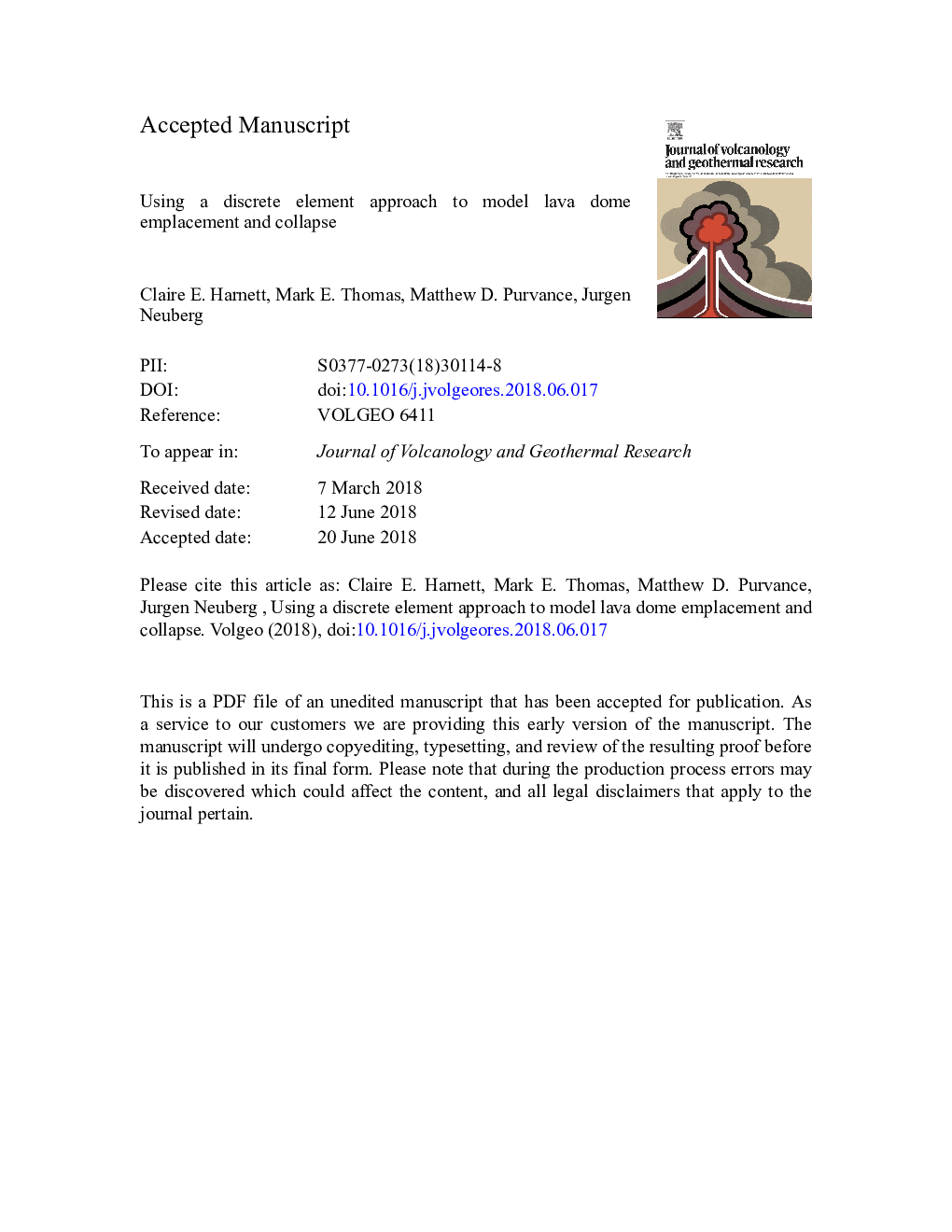| Article ID | Journal | Published Year | Pages | File Type |
|---|---|---|---|---|
| 8911241 | Journal of Volcanology and Geothermal Research | 2018 | 45 Pages |
Abstract
Lava dome collapses can lead to explosive activity and pyroclastic flow generation which makes them one of the most deadly consequences of volcanic activity. The mechanisms linked to a collapse are however still poorly understood and very few numerical models exist that investigate the actual collapse of a lava dome after emplacement. We use a discrete element method implemented in the modelling software Particle Flow Code to investigate lava dome growth, but also go further to test the stability of the dome under the following conditions: increased internal pressure; switch in extrusion direction caused by partial cooling of the dome; and extrusion of lava onto variable underlying topography. We initially show the morphology development of a growing lava dome, and how the rheological boundary between core and talus evolves throughout the lifetime of a dome and with varied solidus pressures. Through visualisation of strain accumulation within the lava dome we show superficial rockfall development due to interaction with topography, whereas large deep-seated failures occur when the dome is exposed to internal overpressures. We find that a switch in extrusion direction promotes a transition from endogenous to exogenous dome growth and leads to lava lobe formation. We demonstrate that lava dome collapse exhibits many features similar to common landslides and by investigating strain patterns within the dome, we can use numerical modelling to understand features that elude field observations.
Related Topics
Physical Sciences and Engineering
Earth and Planetary Sciences
Geochemistry and Petrology
Authors
Claire E. Harnett, Mark E. Thomas, Matthew D. Purvance, Jurgen Neuberg,
